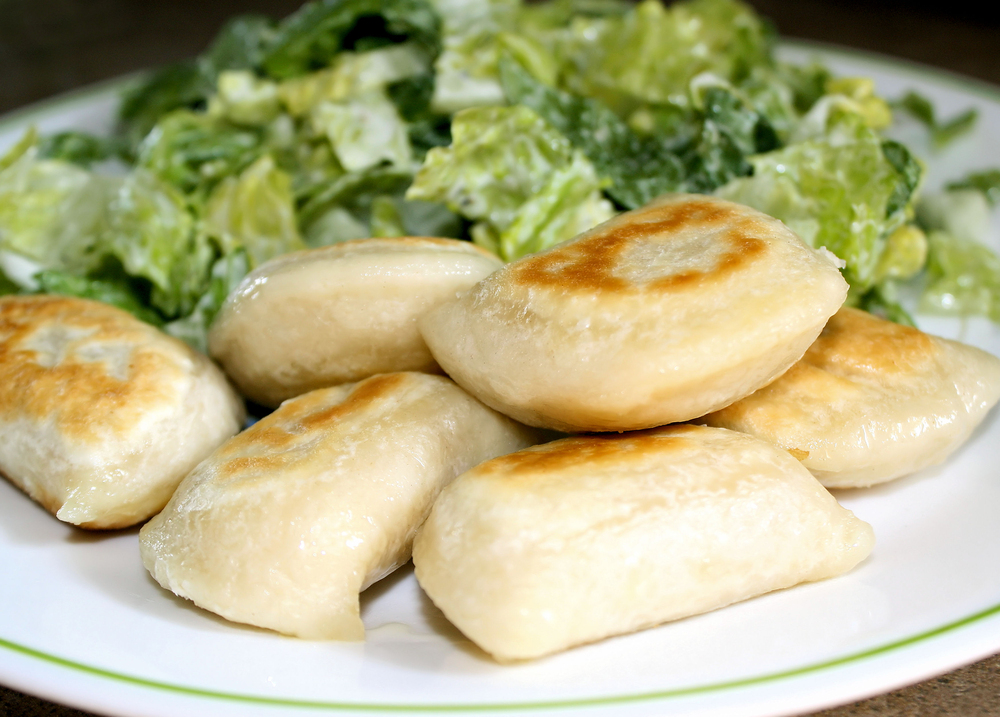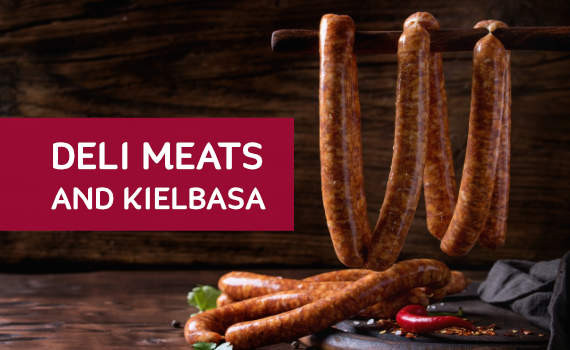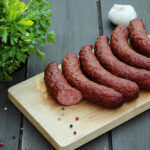Delicious dumplings, known as pierogi, are a cornerstone of Polish cuisine and a source of national pride. Imagine sinking your teeth into a perfectly cooked dumpling, the dough giving way to a burst of savory or sweet flavor. That’s the magic of pierogi! They aren’t just food; they’re a part of Polish celebrations, family gatherings, and everyday meals.
What are Pierogi?
Origins and History
Pierogi are a beloved traditional dish that originated in Eastern Europe, with strong roots in Poland and Ukraine. The term “pierogi” is Polish for “dumplings,” and these delightful parcels have been a staple in Polish cuisine for centuries. The exact origins of pierogi are somewhat shrouded in mystery, but it is widely believed that they first appeared in the 13th century. Over the years, pierogi have evolved, spreading their delicious influence to other parts of the world. Each region has developed its own unique fillings and cooking methods, making pierogi a versatile and universally loved dish.
Definition and Types
At their core, pierogi are dumplings made from unleavened dough, typically filled with a variety of ingredients ranging from savory to sweet. The dough is usually made from simple ingredients like flour, water, and sometimes eggs, creating a pliable and easy-to-work-with base. The fillings can include meat, cheese, potatoes, fruits, and vegetables, offering endless possibilities for customization.
Pierogi can be prepared in several ways: they can be boiled, pan-fried, or baked, each method imparting a different texture and flavor. They are often served with delectable toppings such as sour cream, melted butter, and fried onions, enhancing their already rich taste. There are many types of pierogi, which can be broadly classified into traditional, modern, and regional varieties. Traditional pierogi include classic fillings like potato and cheese, sauerkraut and mushroom, and sweet cheese. Modern variations might feature creative combinations like spinach and feta or chocolate, while regional specialties reflect local ingredients and culinary traditions.
Traditional Fillings from Polish Cuisine
Traditional Polish pierogi fillings are a testament to the country’s culinary heritage, using ingredients that were readily available and preserving techniques for the long winter months. Think hearty and flavorful!
- “Ruskie” (Potato and Cheese): Likely the most popular pierogi, “ruskie” filling comes from a region historically shared by Poland and Ukraine. It’s a comforting mix of mashed potatoes and twaróg cheese (a fresh, slightly sour farmer’s cheese), often with sautéed onions and black pepper. Simple, yet incredibly satisfying.
- Sauerkraut and Mushroom: This filling is the essence of Polish flavors. It combines the tangy kick of sauerkraut with the earthy taste of mushrooms. Traditionally, wild mushrooms were used, but today, button mushrooms are also a common choice. This combination reflects the Polish tradition of preserving foods.
- Meat: Meat fillings usually use ground pork, beef, veal, or poultry (or a mix!). These are seasoned with herbs and spices, and often include sautéed onions for extra flavor and texture.
- Sweet Cheese: This showcases how versatile twaróg cheese is. Sweetened with sugar and a touch of vanilla, it provides a lovely contrast to the savory options. You can also use farmer’s cheese for this sweet treat, making it a popular choice for cheese pierogi.
- Fruit: Summer brings delicious fruit pierogi! Bilberries (European blueberries) and strawberries are popular choices. The fruit is usually sweetened lightly with sugar.
- Poppy Seed, Dried Fruit, and Honey: This special filling, with its sweet and nutty flavor, is a traditional Christmas Eve treat.
- Ushka: A smaller type of pierogi filled with wild mushrooms. Traditionally, it is served with Christmas Eve borscht.
These traditional fillings are the foundation of pierogi culture, offering a delicious taste of Polish culinary history.
Regional Variations and Neighboring Traditions
While the basic idea of pierogi stays the same, different regions and neighboring countries have their own unique twists. Homemade pierogi, cherished for their superior quality and taste, are a beloved comfort food rooted in Eastern European tradition.
Poland
Eastern Poland: Here, you’ll find lentil fillings, reflecting the local agriculture. The Lublin region has a unique “ruskie” variation with mashed potato and dried mint, adding a refreshing taste. Some variations also include lentils and bacon.
Kaszuby: This region in northwestern Poland has a strong culinary identity. Pierogi Kaszubskie are filled with goose meat, offering a rich and distinct flavor, likely due to the region’s tradition of goose farming.
Ukraine
- Potato: Potato fillings are very common, often with sautéed onions, salt, and pepper.
- Cabbage: Both fresh and fermented cabbage are popular. Fresh cabbage is often mixed with sautéed onions and carrots, while sauerkraut might be combined with mushrooms.
- Fruit: Sweet pierogi with cherries, strawberries, and other seasonal fruits are a beloved treat.
Lithuania
- Meat: Lithuanian koldūnai (similar to pierogi) often have a filling of ground beef mixed with sautéed onions, eggs, and breadcrumbs.
- Mushroom: Dried porcini mushrooms, a local delicacy, are a popular choice, often mixed with other mushrooms for a deep, earthy flavor.
Slovakia
- Bryndza: Bryndzové pirohy, a Slovak specialty, are filled with bryndza, a traditional sheep cheese. This cheese is also central to bryndzové halušky, Slovakia’s national dish.
- Prune: Sweet prune fillings, often with sugar and lemon juice, are a popular dessert pierogi.
Czech Republic
- Potato and Cheese: Potato and cheese fillings are common, with variations in the type of cheese used.
- Roasted Cauliflower: Roasted cauliflower with caraway seeds offers a unique and flavorful option.
These regional variations show how adaptable pierogi are, embracing local flavors and culinary customs.
Unique and Creative Fillings
While traditional fillings are cherished, modern chefs and home cooks are getting creative, pushing the boundaries of pierogi fillings.
- Spinach and Feta: This modern twist combines spinach with tangy feta cheese, creating a delicious vegetarian option.
- Lentils: Lentils, packed with protein and flavor, make a hearty and satisfying filling, perfect for vegans and vegetarians.
- Asparagus and Mascarpone: This elegant combination pairs asparagus with creamy mascarpone cheese for a sophisticated flavor.
- Smoked Cheese and Cranberry Jam: Inspired by a popular street food in Zakopane, Poland, this filling uses smoked sheep’s cheese (oscypek) and sweet-tart cranberry jam.
- Chocolate: For a decadent dessert, try chocolate pierogi! They have a cocoa-flavored dough filled with sweet, rich chocolate.
- Buckwheat: Buckwheat groats, a nutritious and gluten-free grain, are popular in southeastern Poland, often combined with farmer’s cheese.
These creative fillings demonstrate the endless possibilities of pierogi! Exploring various pierogi filling recipes can inspire even more unique and delicious combinations.
Pierogi Fillings for Different Dietary Preferences
Pierogi can be enjoyed by everyone, regardless of dietary restrictions.
Vegetarian
Many traditional fillings are naturally vegetarian, like “ruskie” (potato and cheese), sauerkraut and mushroom, and fruit fillings. Modern options like spinach and feta, lentils, and asparagus and mascarpone also fit the bill.
Vegan
Vegan pierogi fillings use plant-based alternatives. Mashed potatoes can be mixed with nutritional yeast for a cheesy flavor, and lentils and sauerkraut provide hearty and flavorful options.
Vegan Cheese Potato Pierogi Filling Recipe:
- 4 medium potatoes, peeled and cut into chunks
- 1 teaspoon salt
- 3 tablespoons vegan butter
- ½ large onion, diced
- 2 tablespoons nutritional yeast
- 1 teaspoon vegetable seasoning
- Pepper to taste
Instructions: Boil potatoes in salted water until tender. Sauté onions in vegan butter. Mash potatoes and combine with sautéed onions, nutritional yeast, and seasonings.
Gluten-Free
Gluten-free pierogi dough can be made with alternative flours like rice flour, buckwheat flour, and tapioca starch. These can be filled with any of the traditional or modern fillings.
Mushroom Filling for Gluten-Free Pierogi Recipe:
- 1 tablespoon olive oil
- 1 ½ banana shallots, diced finely
- 10 ½ ounces fresh mushrooms
- 4 large garlic cloves, diced finely
- 1 large rosemary sprig, leaves chopped
- Salt and pepper to taste
- 1 heaped teaspoon red miso paste
- 2 teaspoons balsamic vinegar
- ½-1 teaspoon maple syrup (optional)
Instructions: Sauté shallots in olive oil until caramelized. Add garlic and rosemary, then mushrooms. Season with salt, pepper, miso paste, balsamic vinegar, and maple syrup (optional).
Tips for Making Gluten-Free Pierogi Dough:
- Combine flours: Use a blend of gluten-free flours, like buckwheat and rice flour, for the best texture.
- Add a binding agent: Use tapioca starch or cornstarch to help bind the dough.
- Use psyllium husk: Psyllium husk powder, mixed with water, creates a gel that improves the texture and elasticity of gluten-free dough.
- Roll thinly: Gluten-free dough can be delicate, so roll it thinly.
- Use potato starch for dusting: Use potato starch instead of regular flour to prevent sticking when rolling and shaping.
Pierogi Dough
The dough recipe is the foundation of any good pierogi.
Traditional Dough
Traditional pierogi dough is usually made with flour, eggs, water, and sometimes sour cream or butter for extra richness.
Vegan Dough
Vegan pierogi dough replaces eggs with plant-based alternatives like flax eggs or applesauce. Vegan sour cream or non-dairy yogurt can also be added.
Gluten-Free Dough
Gluten-free pierogi dough uses a blend of gluten-free flours (like rice flour and buckwheat flour) and binding agents like tapioca starch and xanthan gum.
Tip: Using potato water (the water leftover from boiling potatoes) can add flavor and improve the texture of the dough!
Dessert Pierogi Fillings
Bilberry
Bilberry pierogi are a delightful dessert option that showcases the sweet and tangy flavor of bilberries, a fruit similar to blueberries but with a more intense taste. In Poland, bilberry pierogi are a popular treat, especially during the summer months when the berries are in season. The filling is typically made with fresh or frozen bilberries, mixed with sugar to enhance their natural sweetness. Some recipes also incorporate cream cheese or cottage cheese to add a creamy texture and a slight tang.
To prepare bilberry pierogi, the sweetened bilberries are wrapped in pierogi dough and then boiled or pan-fried until the dough is tender and the filling is warm and juicy. These dessert pierogi are often served with a dollop of whipped cream or a sprinkle of powdered sugar, making them a perfect end to any meal. The combination of the soft, slightly chewy dough with the burst of sweet and tangy bilberries creates a unique and delicious dessert that is sure to impress.
By incorporating these new sections, the article now provides a more comprehensive overview of pierogi, from their historical origins to their modern-day variations, including a focus on dessert fillings. This approach not only enriches the reader’s understanding but also maintains the engaging and informative tone of the original content.
Pierogi Filling Recipes for Popular Pierogi Fillings
| Filling Name | Ingredients | Instructions |
|---|---|---|
| Potato and Cheese (“Ruskie”) Filling | * 8 baking potatoes, peeled and cubed * 1 cup shredded Cheddar cheese * 2 tablespoons processed cheese sauce * 1 pinch onion salt, or to taste * Salt and pepper to taste | Boil potatoes until tender, drain, and mash with cheese and cheese sauce while still hot. Season with onion salt, salt, and pepper. |
| Sauerkraut and Caramelized Onion Filling | * 1-2 tablespoons butter * 1 tablespoon olive oil * ½ red onion, chopped * 1 cup sauerkraut, lightly patted dry and chopped * 2 tablespoons sour cream * Salt and pepper to taste | Sauté onion in butter and olive oil until caramelized. Chop sauerkraut and add to a bowl along with the caramelized onions. Stir in sour cream and season with salt and pepper. |
| Potato and Cheese Filling with Caramelized Onions | * 1 medium russet potato, about 9 ounces, peeled and sliced 3/4 inch thick * 1 tablespoon salt * ¼ cup reserved chopped caramelized onions (from 3 large onions sautéed in 4 tablespoons butter) * 1½ ounces cheddar cheese, shredded (about ⅓ cup) * 1½ ounces farmer’s cheese, cut into small pieces (about ¼ cup) * 1 tablespoon unsalted butter * Salt and ground black pepper, to taste | Boil potatoes until tender, drain, and process through a ricer or food mill. Add sauteed onions, caramelized onions, cheeses, and butter. Season with salt and pepper. |
Tips and Tricks for Making the Perfect Pierogi Filling
- Season to taste: Always taste and adjust the seasoning before filling your pierogi.
- Reduce liquid: Make sure your filling isn’t too moist, or the pierogi might burst while cooking.
- Refrigerate to firm up: Chilling the filling makes it easier to handle.
- Remove air pockets: Gently press around the filling to remove air pockets, which can cause bursting.
- Seal tightly: Make sure the edges are sealed well to prevent leaks.
History and Cultural Significance of Pierogi Fillings
Pierogi have a long history in Poland, dating back to at least the 13th century. Legend says that Saint Hyacinth of Poland introduced pierogi, feeding them to the poor in Kraków. Initially considered peasant food, they eventually became popular with everyone. The first written pierogi recipes appear in Compendium Ferculorum, published in 1682.
The variety of fillings reflects the historical and cultural influences on Polish cuisine. Traditional fillings like “ruskie” and sauerkraut and mushroom show the use of local ingredients and traditions. The evolution of fillings, from elaborate options like venison and truffles to more accessible ingredients like potatoes and cheese, reflects the democratization of pierogi – it became a dish for everyone. This change mirrors the social and economic changes in Poland over time.
Pierogi are more than just everyday food. In the past, different shapes and fillings were used for special occasions like weddings and funerals. Even today, they’re a symbol of Polish identity, enjoyed during celebrations and family gatherings. There’s even a tradition of blessing food, including pierogi, before Easter, highlighting their cultural importance. For Polish immigrants, especially in North America, pierogi are a culinary connection to their homeland and a way to preserve their heritage. The annual Pierogi Festival in Kraków, where thousands of pierogi are eaten daily, is proof of their enduring popularity.
Ready to try some delicious pierogi? You can easily buy pierogi online at Polka-Deli.com!
Conclusion
The world of pierogi fillings is a delicious reflection of Polish culinary creativity and cultural heritage. From simple potato and onion to rich sauerkraut and mushroom, and the creative option that are available, each filling tells a story. The ability to customize the fillings for vegetarian, vegan and gluten-free allows everyone the ability to enjoy a pierogi. Pierogi fillings are a tasty and fulfilling meal while also having a deep connection to cultural identity.








